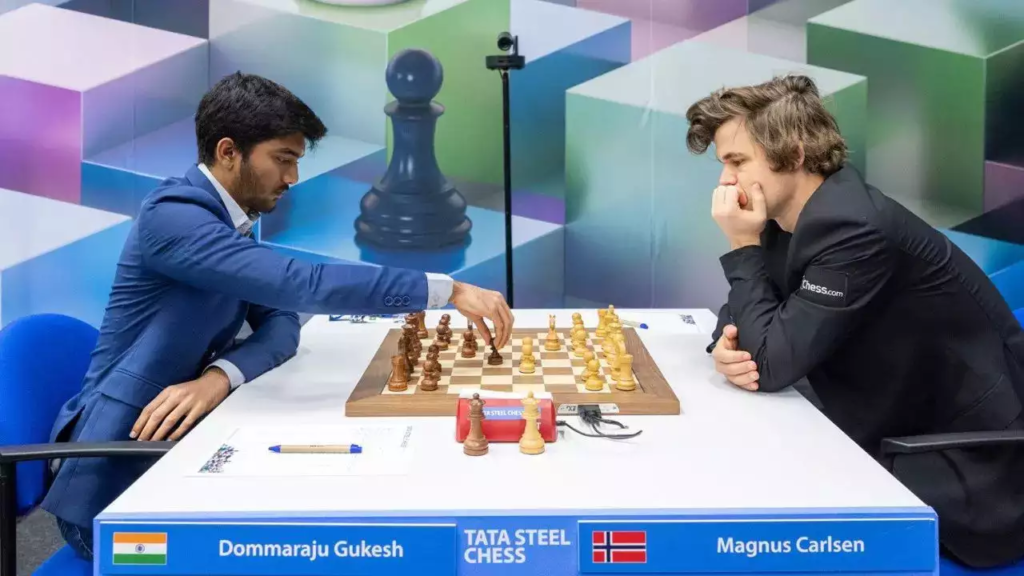
Is freestyle chess the new and coveted format? Not for the first time in the history of the game has this question surfaced. There had been breakaway events not approved by FIDE, the governing body, which drew wide attention. Top names like Garry Kasparov were part of these self-declared world championships. Most such initiatives died down before changing the world order.
The freestyle championship in 2025 — to be held over five legs, and the first one of which was played in Weissenhaus in Germany — is different. This year, it started amid confrontational exchanges between the organisers of the event and FIDE. The other point is the list of participants. World No. 1 Magnus Carlsen, world champion D Gukesh and top players like Fabiano Caruana, Hikaru Nakamura, Alireza Firouzja and Nodirbek Abdusattorov were part of the field of 10.
It’s a stronger assembly perhaps than the Candidates event, which means a possibility of attracting sponsors, although the playing conditions are totally different. In freestyle chess, introduced by the late Bobby Fischer, pieces in the back ranks are randomised. Behind the pawns, they are not placed in conventional positions. There are two specifications — bishops in opposite coloured squares and the king between two rooks. This makes conventional opening preparations meaningless. There are other innovations like displaying the heartbeat of the players when a game is in progress.
Asked by RevSportz, if freestyle chess has the potential to supersede the classical version, Indian Grandmaster Krishnan Sasikiran and seasoned administrator Bharat Singh Chauhan said that this should not be the way to look at it. Both felt that freestyle can become a popular brand, but this doesn’t mean it’s going to be the only format with mass appeal.
“Freestyle chess is an interesting concept,” said Sasikiran, on his way back to Chennai from the airport in Vadodara, where he helped ONGC win the Petroleum Sports Promotion Board chess championship. Among his teammates were Koneru Humpy, the world women’s rapid chess champion, and Chess Olympiad gold medallist Vidit Gujrathi.
“At this point in time, it’s difficult to say if this is the future of chess. It’s complicated. Classical chess will always have its own attraction. The concepts of preparation in these two formats are different. I think that at some stage, people will start thinking about preparations in freestyle. And, at the end of the day, if it’s more attractive for the spectators, then why not?” said Sasikiran, the first Indian to cross the 2700 Elo rating mark after Viswanathan Anand.
Chauhan, the former secretary of the All India Chess Federation, who has also held positions in the FIDE and Asian Chess Federation, was of the view that this freestyle format is a welcome development because it opens up earning opportunities for the players. At the same time, according to him, it is not a threat to the FIDE’s authority.
“FIDE is the supreme and designated body,” said Chauhan. “Only they can conduct the World Championship. Anything not approved by them is not an official event. But this (freestyle event) is not new. We have seen a few championships in the past which didn’t last. It’s good for the players. There is more prize money on offer for them from new competitions.”
The veteran administrator dug deep to make two crucial points. “Most of the major events get a lot of government patronage. If you are talking about sponsors, they are unlikely to go after private initiatives in the long run. I also think that these formats or competitions can coexist. They don’t have to be rivals. We have seen this in the past.”
Sasikiran was asked if this could be compared with the difference that the Indian Premier League has made in the context of cricket. He said the two shouldn’t be equated. According to Sasikiran, there is a difference in the way these sports are comprehended. “Cricket is more of a straightforward game. If you are a layman in both, it’s easier to understand than chess.”
Chess is not driven by physical instincts, unlike other sports. One has to study and spend hours in order to understand what is going on at the top level. A part of Anand’s team of seconds in two World Championship duels with Carlsen, Sasikiran concluded with an interesting take. He said that it’s also up to the commentators to simplify things for the common onlooker.
“It’s important to present it in a simple and engaging way. Those who are in the profession of commentating or reporting on chess should do it in a manner that the common man can associate with. It’s difficult and that’s why it’s different from cricket or IPL,” said Sasikiran.
This freestyle battle in chess, in all fairness, has just begun. Wait and watch before coming to conclusions.
Also Read: Arjun and Hari: Unsung heroes of Indian one-two at Tata Steel chess



